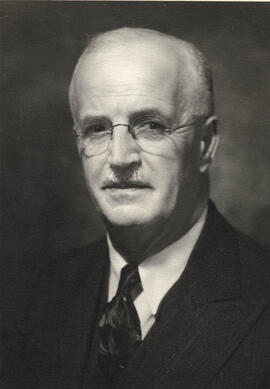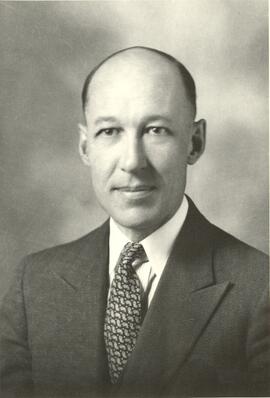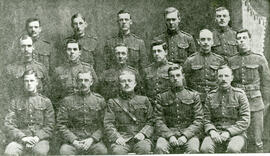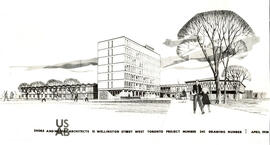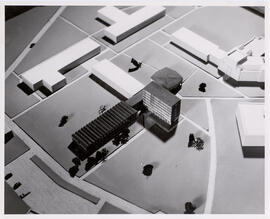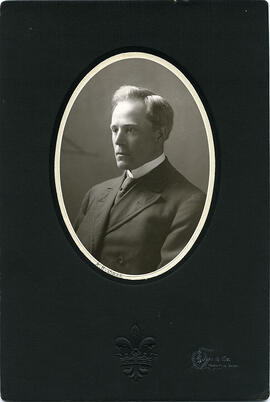- A-3174
- Item
- [195-?]
Head and shoulders image of C.J. Mackenzie, first dean of Engineering, 1915-1922.
Bio/Historical Note: Dr. Chalmers Jack (CJ) Mackenzie was born in 1888 in St. Stephen, New Brunswick, and earned a BEng at Dalhousie University in 1909. In 1912 he was hired to develop an engineering program at the University of Saskatchewan. During World War I Dr. Mackenzie served with the 54th Battalion, Canadian Expeditionary Force (1915-1918). After the war he continued at the U of S until 1932, when he took a leave of absence to supervise public works projects. In 1939 he left Saskatchewan for Ottawa to become president of the National Research Council. Dr. Mackenzie served as president of the National Research Council, first president of Atomic Energy of Canada Limited, first president of Atomic Energy Control Board and instrumental in the development of science and engineering education in Canada. In 1949 he sat on the Royal Commission on National Development in the Arts, Letters and Sciences, the so-called "Massey Commission", one objective of which was developing Canada's system of publicly funded research. Among many honours Dr. Mackenzie received an honourary Doctor of Laws degree from the U of S in 1945. In 1967 Mackenzie was made a Companion of the Order of Canada. CJ Mackenzie died in Ottawa in 1984 at age 95. The U of S College of Engineering’s annual Distinguished Lecture Series was started in 1976 to honour alumni who have achieved positions of eminence in the profession. On its 10th anniversary the event was renamed for Dr. Mackenzie, to recognize the contribution he made to the college, the university and the engineering profession. By 2022 the series was named the C.J. Mackenzie Gala of Engineering Excellence.



